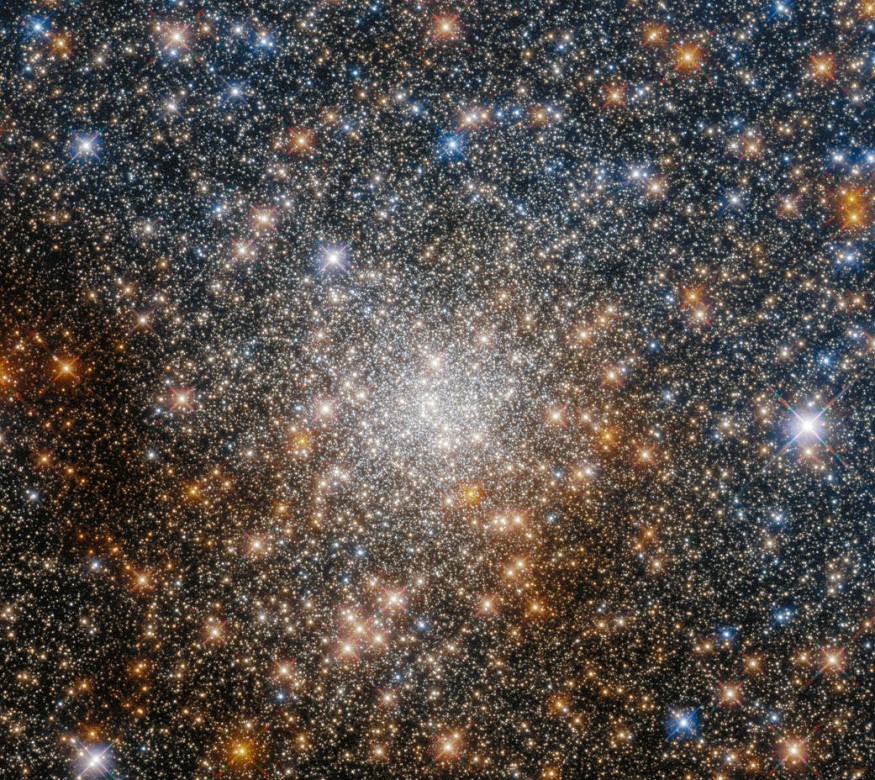NASA's Hubble Space Telescope has found itself reveling in a sea of globular clusters brimming with millions of brilliant stars appearing like they are trying to outshine one another in the Milky Way Galaxy.
A galactic bulge, a densely packed cluster of rich stars amid interstellar dust, may be found in the Milky Way's core.
NASA Hubble Space Telescope Finds Globular Cluster Brimming With Millions of Stars
Terzan 9 is a star in the constellation Sagittarius near the Milky Way's center.
The constellation is around 700 parsecs (2,283 light-years) from the Milky Way's core, according to SciNews.
It belongs to the inner bulge volume and is one of the globular clusters closest to the Galactic center, also known as GCl 80.1.
"Globular clusters are stable, tightly bound groups of tens of thousands to millions of stars," NASA said in a statement.
The hearts of globular clusters are tightly packed with stars, as shown in the figure below. Terzan 9 is encrusted with so many sparkling stars that it resembles a sea of sequins or a massive gold chest.
Digital Trends said the center of the Milky Way, called the galactic bulge, is a region rich in stars.
The Milky Way, like other spiral galaxies, has a flat wheel form for the most part, but the bulge in the center pushes out from that plane.
The stars that make up the bulge differ from those lying on the plane because those in the center are older and redder.
There is also a lot of interstellar dust in the Milky Way's galactic bulge, making it harder to study this region as the dust obscures the view.
Hubble scientists explained that this dust makes globular clusters near the galaxy's center challenging to study, as it absorbs starlight and can even change the apparent colors of stars in these clusters.

Hubble's sensitivity at visible and infrared wavelengths, according to scientists, allows astronomers to study how star colors change owing to interstellar dust.
Experts added that knowing a star's color and brightness allows astronomers to estimate its age, thereby calculating the globular cluster's age.
Globular Clusters Explained
Globular clusters are often bigger and more gravitationally constrained than open clusters, which are simply a few tens to hundreds of stars densely packed.
According to the European Space Agency, these clusters are densely inhabited, with populations ranging from tens of thousands to millions of stars.
Because of the strong gravitational interaction between the densely packed stars, globular clusters have a regular, spherical form.
Open clusters, which may scramble before their stars reach an older age, have younger, redder stars than globular clusters, which have older, redder stars.
They are incredibly stable and can exist for billions of years due to their enormous gravitational attraction.
According to ESA, they are also linked to various galaxies. They could be seen in the Milky Way's halo and bulge.
Since its constituent stars originated at about the same time and location and had similar initial compositions, astronomers are captivated by all stellar clusters.
As a result, stellar clusters yield important information about star formation and development.
Because it is virtually impossible to distinguish the stars in globular clusters with ground-based telescopes, Hubble pioneered key advances in studying space objects.
RELATED ARTICLE : NASA Hubble Space Telescope Shares Stunning Photo of Grand Design Spiral Galaxy [See]
Check out more news and information on Space in Science Times.












